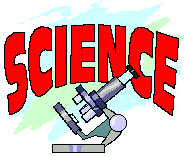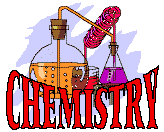

Welcome to the wonderful world of Science!




| Science skills - Observing, Organizing Information, classifying, sequencing, concept mapping, making and using tables and graphs, measuring, comparing and contrasting, cause and effect, forming operational definitions measuring in SI, forming a hypothesis, designing experiments and projects to test a hypothesis, separation and controlling variables, interpreting data, communicating, inferring, relating, making generalizations, applying, evaluating information, problem solving, decision making, inquiry, making models, predicting, sampling and estimating |
 Life
Science - Circulation in Plants and animals, Moving the Body, controlling the body
machine, Breathing, Basic units of Life (the cell), how cells do their job, *Structure and
function of living systems, reproduction and heredity, regulation of behavior, populations
and ecosystems, diversity and adaptations of organisms. Life
Science - Circulation in Plants and animals, Moving the Body, controlling the body
machine, Breathing, Basic units of Life (the cell), how cells do their job, *Structure and
function of living systems, reproduction and heredity, regulation of behavior, populations
and ecosystems, diversity and adaptations of organisms. |
 Earth
Science - Forces in Earth, Minerals and their use, The Rock Cycle, The Ocean floor and
shore zones, Energy resources, the air around you, *structure of the earth, earth's
history, earth in the Solar System Earth
Science - Forces in Earth, Minerals and their use, The Rock Cycle, The Ocean floor and
shore zones, Energy resources, the air around you, *structure of the earth, earth's
history, earth in the Solar System |
 Chemistry
- Discovering elements, Chemical reactions Chemistry
- Discovering elements, Chemical reactions |
 Science
and Technology - *Abilities of Technological design, understanding about Science and
Technology Science
and Technology - *Abilities of Technological design, understanding about Science and
Technology |
| Science in Personal and Social Perspectives - *Personal health, Populations, resources and environments, natural hazards, risks and benefits, Ethics and Science and technology in Society, careers in Science |
| Unifying Concepts and Processes -*systems, order and organization, Evidence, models and explanation, change constancy and measurement, Evolution and equilibrium |
| Science as Inquiry - *Science abilities , understandings about Scientific inquiry |
| History and Nature of Science -*Science as Human Endeavor, nature of Science, History of Science |
* Program Supports the National Science Education Standards, Sunshine State Standards of the Florida Dept. of Ed., Project 2061 of The American Association for the Advancement of Science

As do the best WebQuests, this one features interaction with information and community, concensus building within groups, no one correct answer, and stretching the limits of kids. Best of all, when students complete the project, they get to live out their speculation.

Check the 6th and 8th grade Science Web sites too!
